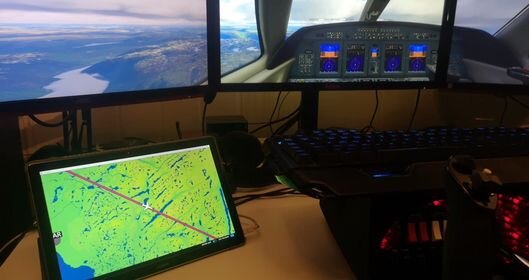App, Plugin – Splashtop XDisplay, use your Android, iOS tablets as 2nd screens for Microsoft Flight Simulator 2020
Submitted by marsvinking
Look, if you’ve only got one screen screen setup when flying in MSFS, it’s a bit challenging. Even more if you can’t afford a Track IR rig that could cost hundreds, and you have to stretch across your desk to find your mouse mid-maneuver and try to change your view quickly to check something inside the cockpit. Also you’re going to not have a great time if you’re a fan of VFRmap (or even use the in-game VFR map that comes up when you press ‘V’, which will end up covering 20-30% of your screen’s real estate).
Splashtop elegantly solves these issues, giving you the ability to use any other device as a low-latency monitor for Microsoft Flight Simulator 2020. Various devices have various connectivity requirements though, for example Android tablets will require enabling USB Debugging. For other devices, it is simpler. While Splashtop can work over a wireless local network, it is strongly recommended you use a wired connection. This will ensure you’ll have a strong connection, even if someone in your house/apartment is using the microwave.
Word of warning, this isn’t truly freeware. To unlock all the features you will have to pay, but considering that some hardware units that give you physical instrument controls (e.g. autopilot) cost hundreds of dollars. We think Splashtop is a good alternative for those on a budget. Plus it is free to try (your sessions will be limited to 10 minutes though).
BONUS TIP: Hold the right alt key and click any instrument to make it windowed,
so you can drag it to your Splashtop monitor.
Setup & Install
Install Splashtop on your PC that you use to run Microsoft Flight Simulator
Install Splashtop on your tablet / other computer that you wish to use as a secondary display
Connect the two using USB (or wireless, although this will not run as smoothly)
Follow the remaining (if there are any) setup instructions for your specific devices.


